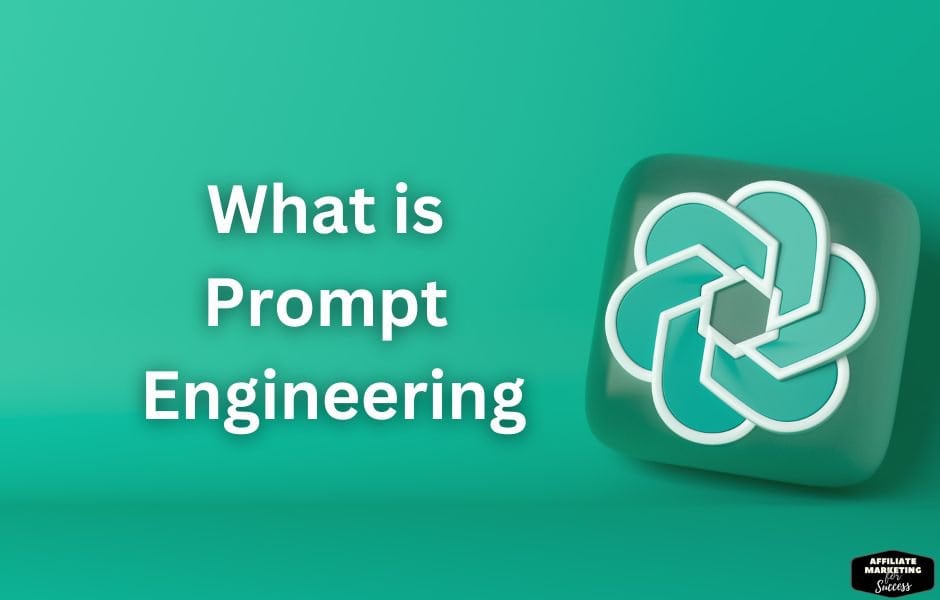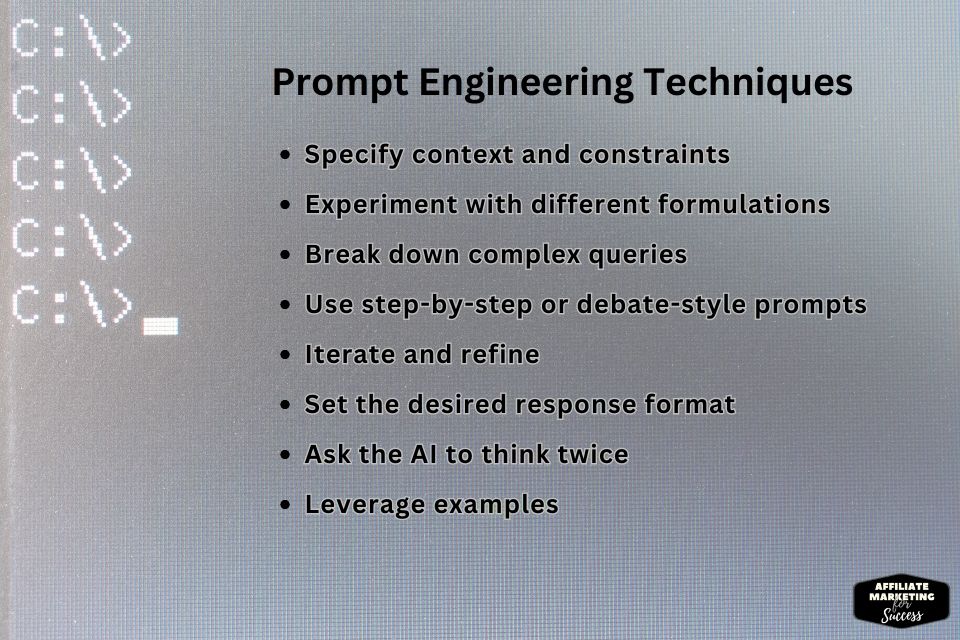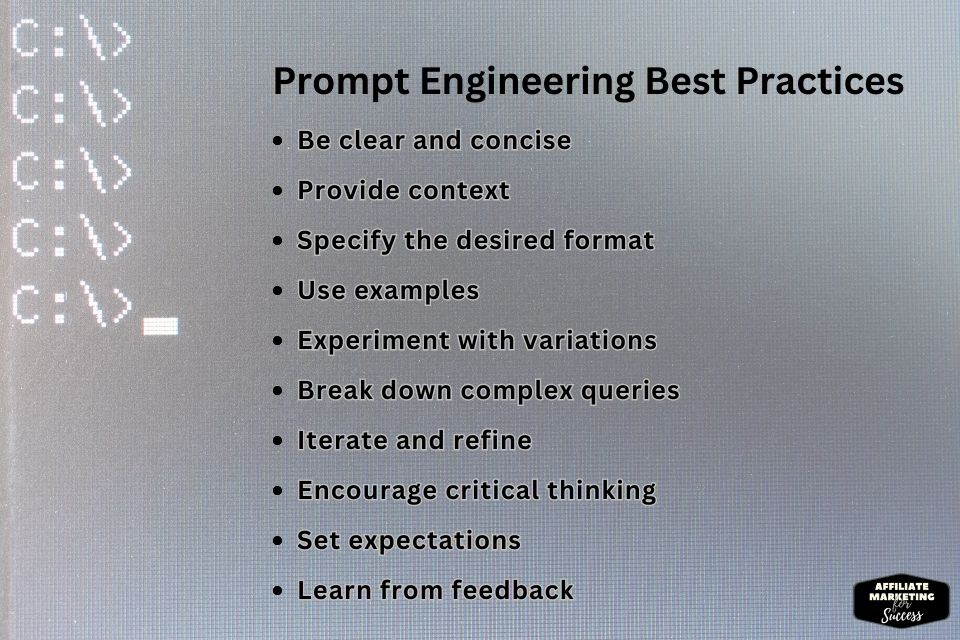Prompt Engineering: 7 Expert Steps to Master AI Prompts
In today’s rapidly advancing technological landscape, prompt engineering has emerged as an essential skill for anyone interacting with artificial intelligence. As generative AI models become increasingly sophisticated, the ability to craft effective prompts is crucial for unlocking their full potential.
This comprehensive guide aims to help you master prompt engineering, providing invaluable insights into the art and science of communicating with AI.
Key Takeaways
- Prompt engineering is key to using AI language models well in today’s fast-changing world.
- With the right prompts, AI can make content, solve problems, and do complex tasks well.
- Custom GPTs can streamline workflows, automate tasks, and enhance workplace communication.
- Using advanced prompt engineering, like visual inspiration and emotional connection, can make AI content even better.
It’s important to know about ethical issues and new tools in prompt engineering for using AI responsibly.
Understanding Prompt Engineering
What Is Prompt Engineering?
Prompt engineering is the practice of designing and refining prompts to guide language models in generating the desired output. It’s about crafting messages that effectively communicate a specific task to AI systems, ensuring accurate and relevant responses.
Why Is Prompt Engineering Important?
With the rise of generative AI models, the way we interact with technology is changing. Effective prompting allows us to:
- Leverage AI capabilities for various applications
- Improve the accuracy and relevance of AI-generated content
- Simplify complex tasks through clear communication
- Enhance AI interaction for better user experiences
Core Principles of Effective Prompt Engineering
Clarity and Specificity
Learning prompt engineering secrets begins with understanding the core principles:
- Specify the task: Clearly define what you want the AI to do.
- Use precise language: Avoid ambiguity to prevent misunderstandings.
- Set clear expectations: Outline the format or style of the desired output.
Contextual Cues
Understanding AI’s contextual learning capabilities ensures the AI has all the information needed to perform the task accurately.
- Background information: Include relevant details that shape the response.
- Define the audience: Specify who the content is for to tailor the tone and complexity.
- Establish roles: Assign a role to the AI (e.g., “You are an expert in…”) to influence its perspective.
Incremental Steps
Breaking down the task into smaller steps can help manage complex prompts. Learning advanced prompt engineering techniques involves:
- Step-by-step instructions: Guide the AI through each part of the task.
- Prompt chaining: Connect multiple prompts to build upon previous responses.
- Iterative refinement: Continuously improve the prompt based on the AI’s outputs.
Refining Prompts
Mastering prompt refinement is an ongoing process to enhance the quality of AI responses.
- Analyze results: Assess if the output meets the expectations.
- Adjust accordingly: Modify the prompt to rectify any issues.
- Experiment with variations: Try different prompts to see which yields the best results.
Advanced Prompt Engineering Techniques
Few-Shot Learning
Provide the AI with a few examples to illustrate the desired outcome.
- Demonstrate format and style: Show examples that the AI can mimic.
- Enhance understanding: Help the AI grasp more nuanced requests.
- Useful for new or complex tasks: When the AI might not have enough context.
Chain-of-Thought Prompting
Mastering AI communication techniques involves encouraging the AI to process information logically and provide reasoned responses.
- Promote step-by-step reasoning: Ask the AI to explain its thought process.
- Improve accuracy: Logical reasoning can lead to more precise answers.
- Ideal for problem-solving tasks: Such as math problems or analytical questions.
Role-Based Instructions
Understanding AI capabilities helps in assigning roles that can influence the AI’s approach and tone.
- Set a persona: Define the AI as a teacher, doctor, engineer, etc.
- Tailor the response: The AI adjusts language and content based on the role.
- Enhance relevance: The AI leverages domain-specific knowledge.
Prompt Chaining
Link multiple prompts to handle more intricate tasks.
- Divide and conquer: Break the task into smaller, manageable parts.
- Build complexity gradually: Start simple and increase complexity with each prompt.
- Maintain coherence: Ensure all prompts are connected logically.
Practical Applications of Prompt Engineering
Content Creation
- Blog posts and articles: Generate informative and engaging content.
- Social media: Craft compelling posts and updates.
- Marketing materials: Develop persuasive copy for advertising.
Software Development
- Code generation: Assist in writing code snippets in various programming languages.
- Debugging assistance: Help identify and fix errors in code.
- Documentation: Create clear and concise technical documentation.
Education and Training
- Lesson plans: Design educational materials for different learning levels.
- Study guides: Summarize key concepts and topics.
- Interactive learning: Develop quizzes and practice questions.
Data Analysis
- Summarizing findings: Condense large datasets into key insights.
- Exploratory analysis: Generate hypotheses and explanations.
- Reporting: Create detailed reports based on data.
Best Practices for Mastering Prompt Engineering
Understand the AI Model
- Know the limitations: Be aware of what the AI can and cannot do.
- Stay updated: Keep abreast of updates to generative AI models.
- Leverage strengths: Use the AI’s capabilities to your advantage.
Practice Regularly
- Experiment often: Try different prompts to see varying results.
- Learn from experience: Take note of what works and what doesn’t.
- Develop intuition: Over time, you’ll get a feel for effective prompts.
Use Natural Language Processing Principles
- Clear and concise language: Simplify complex ideas.
- Avoid jargon: Unless necessary, use common language.
- Active voice: Makes instructions clearer and more direct.
Ethical Considerations
- Bias awareness: Be mindful of potential biases in AI responses.
- Appropriate content: Avoid using prompts that generate inappropriate material.
- Respect privacy: Do not include sensitive personal information in prompts.
Overcoming Challenges in Prompt Engineering
Handling Ambiguity
- Be precise: Clearly define terms and expectations.
- Ask for clarification: If the AI provides an unclear response, prompt it to elaborate.
- Provide examples: Illustrate what you’re looking for.
Managing AI Limitations
- Adjust complexity: Simplify prompts if the AI struggles.
- Guide the AI: Use contextual cues to steer the response.
- Set boundaries: Specify what the AI should and should not include.
The Future of Prompt Engineering
Evolving AI Technology
- Advancements in AI: Generative AI models are becoming more human-like.
- Improved understanding: Future AIs may require less explicit prompting.
- Integration with other technologies: Combining AI with machine learning for enhanced capabilities.
Growing Importance of Prompt Engineers
- Increased demand: As AI becomes more prevalent, the need for skilled prompt engineers rises.
- Cross-disciplinary applications: Opportunities in various fields like healthcare, finance, and education.
- Continual learning: Staying updated with the latest AI applications and technologies.
Case Studies: Success Stories in Prompt Engineering
Enhancing Customer Support
A company improved its customer service by training AI to handle inquiries.
- Effective prompts: Crafted to understand and respond to common questions.
- Reduced workload: Freed up human agents for more complex issues.
- Improved satisfaction: Faster response times led to happier customers.
Streamlining Software Development
Developers utilized AI for coding assistance.
- Code generation: Used prompts to write boilerplate code.
- Error checking: AI helped identify bugs and suggest fixes.
- Increased productivity: Developers could focus on more critical tasks.
Tips for Aspiring Prompt Engineers
Continuous Learning
- Stay curious: Always look for new ways to use AI.
- Join communities: Engage with others in forums or groups.
- Attend workshops: Participate in events related to AI and prompt engineering.
Build a Portfolio
- Document your work: Keep records of successful prompts and outcomes.
- Share your knowledge: Publish case studies or how-to guides.
- Seek feedback: Learn from others to improve your skills.
Conclusion
Mastering prompt engineering opens up a world of possibilities in the realm of artificial intelligence. By applying the principles and techniques outlined in this guide, you can enhance your interactions with generative AI models, making them more effective and efficient.
Whether you’re a developer, content creator, educator, or simply an enthusiast, honing your skills as a prompt engineer will enable you to leverage AI tools to their fullest potential. Embrace the journey of continuous learning and exploration in this exciting and ever-evolving field.
This guide serves as a starting point for your exploration into prompt engineering. As you progress, remember that practice and persistence are key. The future of AI is collaborative, and your ability to communicate effectively with these systems will be a valuable asset in any endeavor.
Helpful Resources
Official Learning Platforms
- Learn Prompting – Free Comprehensive Guide – Completely free, comprehensive resource widely regarded as one of the best introductions to prompt engineering.
- Microsoft Semantic Kernel Documentation – Official Microsoft guide covering prompt engineering fundamentals and best practices.
- Prompt Engineering Guide by DAIR.AI – Up-to-date guide containing latest papers, techniques, learning materials and tools.
Online Courses & Tutorials
- The Perfect Prompt Engineering Cheat Sheet – Detailed reference guide covering frameworks, templates, and advanced techniques.
- Vanderbilt University Prompt Engineering Course – Comprehensive 3-week course covering fundamentals to advanced concepts.
Video Resources
- Complete Prompt Engineering Course 2024 – In-depth 5-hour course covering fundamentals to advanced concepts with hands-on examples.
I’m Alexios Papaioannou, an experienced affiliate marketer and content creator. With a decade of expertise, I excel in crafting engaging blog posts to boost your brand. My love for running fuels my creativity. Let’s create exceptional content together!











